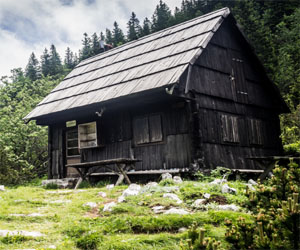


Cultivating A Sustainable Green Space

In an era where environmental consciousness is at the forefront, eco-friendly gardening has gained immense popularity. This sustainable approach to gardening not only benefits the environment but also enhances the overall well-being of your green space. Let's explore what eco-friendly gardening is and why it's a great choice for both seasoned gardeners and beginners.
What Is Eco-Friendly Gardening?
Eco-friendly gardening, also known as sustainable gardening, is a gardening approach that emphasizes practices that are in harmony with the environment. It's all about cultivating your garden in a way that minimizes the negative impact on the planet. This eco-conscious approach covers a broad range of strategies and techniques, and it can be applied to gardens of all sizes, from sprawling backyards to small urban balconies.
Benefits Of Eco-Friendly Gardening:
Reduced Environmental Impact: One of the primary advantages of eco-friendly gardening is its ability to reduce the negative impact on the environment. By avoiding harmful chemical pesticides and synthetic fertilizers, you help protect the soil, water, and air from pollution.
Biodiversity: Eco-friendly gardening practices encourage the presence of diverse plant and animal species in your garden. This not only adds to the beauty of your green space but also contributes to local biodiversity and ecosystem health.
Sustainability: Sustainable gardening prioritizes renewable resources and practices, ensuring the long-term health and productivity of your garden. Composting, mulching, and water conservation are key elements of this approach.
Healthier Garden: By avoiding harsh chemicals, your garden becomes a healthier place for plants, insects, and people. Organic gardening methods promote the use of natural predators to control pests, resulting in a balanced and thriving ecosystem.
Cost-Effective: Eco-friendly gardening can be cost-effective in the long run. While initial investments in organic soil amendments and composting may be slightly higher, the reduced need for chemical inputs and lower maintenance costs can offset these expenses over time.
Principles Of Eco-Friendly Gardening:
Natural Pest Control: Encourage beneficial insects like ladybugs and lacewings, and use natural remedies like neem oil to combat garden pests.
Organic Soil Enrichment: Improve soil health with compost and organic matter, reducing the need for synthetic fertilizers.
Water Conservation: Use mulch to retain moisture, install rain barrels, and choose drought-tolerant plants to reduce water usage.
Native Plants: Incorporate native plant species into your garden, which are adapted to the local climate and require less maintenance.
Reduced Waste: Compost kitchen scraps and garden waste to minimize landfill contributions and create nutrient-rich soil amendments.
Minimal Lawn Space: Replace some of your lawn with pollinator-friendly gardens or vegetable plots to maximize the utility of your green space.
Eco-friendly gardening is not just a trend; it's a lifestyle choice that benefits both the environment and those who practice it. Whether you're starting a new garden or revitalizing an existing one, consider adopting these sustainable principles. By cultivating a green space that works in harmony with nature, you're not only enjoying the beauty of your garden but also contributing to a healthier planet.


From Neglect To Paradise
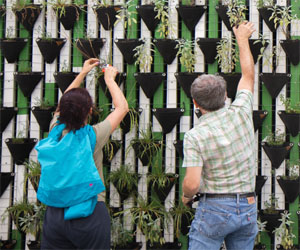 Assessment And Planning: The first step in any garden transformation is a thorough assessment of your space. Take a critical look at your garden, considering factors such as the current state of the plants, soil quality, layout, and potential issues like drainage problems. This assessment will help you identify the areas that need the most attention and guide your planning.
Assessment And Planning: The first step in any garden transformation is a thorough assessment of your space. Take a critical look at your garden, considering factors such as the current state of the plants, soil quality, layout, and potential issues like drainage problems. This assessment will help you identify the areas that need the most attention and guide your planning.
Clearing And Cleaning: For many neglected gardens, the first order of business is clearing away overgrown vegetation, weeds, and debris. This is the blank canvas upon which your transformation will unfold. Prune unruly branches, remove dead plants, and clear the ground to prepare it for new growth.
Soil Improvement: Healthy soil is the foundation of any successful garden. Assess your soil's condition and amend it as necessary. Adding organic matter like compost or well-rotted manure can improve soil structure and fertility, ensuring your plants have the nutrients they need to thrive.
Plant Selection: Choose plants that are well-suited to your local climate and growing conditions. Consider a mix of annuals, perennials, shrubs, and trees for a balanced and visually appealing garden. You can also incorporate native plants, which are adapted to the area and require less maintenance.
Garden Layout And Design: Carefully plan the layout of your garden. Consider elements like pathways, seating areas, and focal points. Create a design that not only enhances the beauty of your space but also ensures practicality and ease of maintenance.

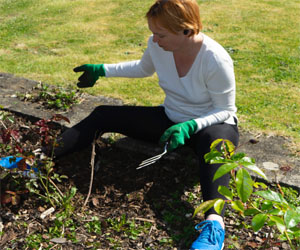

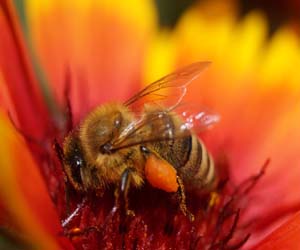


Exploring Alternative Energy Sources
 Solar Power: Solar energy is one of the most widely recognized and accessible alternative energy sources. It harnesses the sun's energy through photovoltaic cells, converting sunlight into electricity. Solar panels are now a common sight on rooftops and in solar farms, offering a clean and renewable source of power. The technology has become increasingly affordable and efficient, making it a viable option for both residential and commercial use.
Solar Power: Solar energy is one of the most widely recognized and accessible alternative energy sources. It harnesses the sun's energy through photovoltaic cells, converting sunlight into electricity. Solar panels are now a common sight on rooftops and in solar farms, offering a clean and renewable source of power. The technology has become increasingly affordable and efficient, making it a viable option for both residential and commercial use.
Wind Energy: Wind power has also gained significant traction in the alternative energy landscape. Wind turbines convert the kinetic energy of moving air into electricity. Wind farms, often situated in open, windy areas, have become a prominent feature of many countries' energy grids. The scalability of wind power makes it a flexible and promising energy source.
Hydropower: Hydropower, generated from the energy of flowing water, has been a tried and true source of renewable energy for many years. Large dams and smaller hydroelectric plants generate electricity by harnessing the kinetic energy of water. While these projects can have significant environmental impacts, innovations in small-scale, low-impact hydropower systems are being explored.
Geothermal Energy: Geothermal power taps into the Earth's internal heat. It involves drilling wells to access hot water or steam reservoirs below the Earth's surface and using this thermal energy to generate electricity. Geothermal energy is a reliable source of baseload power and is considered highly sustainable.
The Power Of Smart Home Upgrades
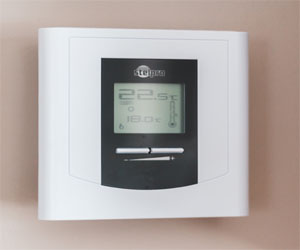 One of the primary advantages of smart home upgrades is the convenience they bring to our daily lives. Imagine being able to control your lights, thermostat, and even your coffee maker with a simple voice command or a tap on your smartphone. With the help of devices like smart speakers and home automation systems, you can create a truly interconnected living space. Adjusting your home's settings to suit your preferences has never been easier, making everyday tasks more efficient and enjoyable.
One of the primary advantages of smart home upgrades is the convenience they bring to our daily lives. Imagine being able to control your lights, thermostat, and even your coffee maker with a simple voice command or a tap on your smartphone. With the help of devices like smart speakers and home automation systems, you can create a truly interconnected living space. Adjusting your home's settings to suit your preferences has never been easier, making everyday tasks more efficient and enjoyable.
Security And Peace Of Mind
Smart home security is another major draw for homeowners. Advanced security systems equipped with cameras, motion sensors, and doorbell cameras provide real-time monitoring and alerts. This means you can keep a watchful eye on your property, whether you're at home or miles away. Smart locks also add an extra layer of security, allowing you to control access remotely and even provide temporary digital keys to guests.
Energy Efficiency
Smart home upgrades can significantly contribute to reducing your energy consumption and environmental footprint. Smart thermostats, for instance, can create personalized heating and cooling schedules that adapt to your daily routines, resulting in lower energy bills. Moreover, you can monitor and control your energy usage with the help of energy management systems, which offer insights into where and how you can save energy.
Bringing Sunshine To Your Home
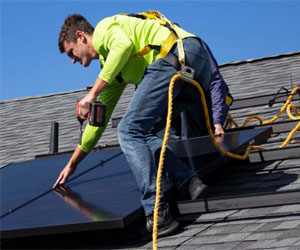 Permitting: Before installation can begin, you'll need to obtain the necessary permits and approvals from local authorities. Your solar installation company can assist you with this process.
Permitting: Before installation can begin, you'll need to obtain the necessary permits and approvals from local authorities. Your solar installation company can assist you with this process.
Installation: The solar panels and associated equipment, such as inverters and racking, are installed on your roof or property. The panels are securely mounted to ensure they can capture the maximum amount of sunlight.
Connection To The Grid: In many cases, residential solar systems are connected to the grid. This allows excess energy to be sent back to the grid in exchange for credits or compensation.
Testing And Inspection: Once the installation is complete, the system is thoroughly tested to ensure it's working correctly. Inspections may also be required to verify compliance with local regulations.
Monitoring And Maintenance: After installation, your solar system will be monitored to track its performance. Routine maintenance, such as cleaning the panels and checking for any issues, will be necessary to keep the system running efficiently.
Benefits Of Solar Installation
Reduced Energy Bills: Solar installation can significantly reduce your electricity bills. By generating your electricity from sunlight, you'll rely less on traditional utility providers.
Environmental Benefits: Solar power is a clean and renewable energy source. It reduces your carbon footprint and helps combat climate change.
Energy Independence: Solar installation provides a degree of energy independence. You're less reliant on the grid, which can be particularly beneficial during power outages.
Increased Property Value: Homes with solar panels are often more attractive to buyers, potentially increasing your property's value.
Shaping Spaces For Comfort And Functionality
 Functional Layout: An effective housing design starts with a well-thought-out floor plan. It considers the practical needs of residents, from the number of bedrooms and bathrooms to the placement of the kitchen and living areas. An efficient layout maximizes space utilization and minimizes wasted square footage.
Functional Layout: An effective housing design starts with a well-thought-out floor plan. It considers the practical needs of residents, from the number of bedrooms and bathrooms to the placement of the kitchen and living areas. An efficient layout maximizes space utilization and minimizes wasted square footage.
Aesthetics: While functionality is paramount, aesthetics are equally important. Aesthetically pleasing design can enhance the quality of life for residents. The choice of materials, colors, and architectural elements can create a sense of comfort, style, and identity within the home.
Sustainability: Sustainable housing design is on the rise, driven by a growing awareness of environmental concerns. Green building practices focus on using eco-friendly materials, energy-efficient technologies, and renewable energy sources to minimize the carbon footprint of a home.
Adaptability: Housing design should be flexible and adaptable to accommodate the changing needs of its inhabitants. This is particularly important in a world where the dynamics of families and lifestyles evolve over time. Features like convertible spaces and modular furniture are becoming more popular.
Accessibility: Accessibility is a critical aspect of housing design. It ensures that homes can be comfortably and safely used by people of all ages and abilities. Features like wider doorways, no-step entries, and accessible bathroom and kitchen designs are integral to inclusive housing.
Natural Light And Ventilation: Designers are increasingly focusing on maximizing natural light and ventilation in homes. Well-placed windows and open floor plans can significantly improve the quality of life for residents while reducing the need for artificial lighting and climate control.
The Art Of Seed Selection
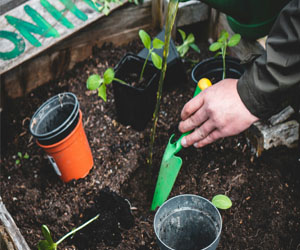 Consider Your Garden's Goals
Consider Your Garden's Goals
Before you dive into the world of seed catalogs, take a moment to consider the goals for your garden. Are you interested in growing vegetables, herbs, flowers, or a combination of these? Are you aiming for a bountiful harvest, stunning aesthetics, or both? Understanding your garden's purpose will help you make the right seed selections.
Open-Pollinated vs. Hybrid Seeds
One of the primary choices you'll encounter is between open-pollinated and hybrid seeds. Open-pollinated seeds are the result of natural pollination and breeding. They tend to be more stable and reproduce true to type, meaning that the offspring will resemble the parent plant.
On the other hand, hybrid seeds are the result of controlled cross-breeding between two different parent plants. They often exhibit desirable traits like disease resistance or improved yield. However, saving seeds from hybrid plants may not produce consistent results in the next generation.
Choosing Varieties
When selecting seeds, you'll have numerous varieties to choose from. Consider factors like:
Climate Suitability: Choose varieties that are well-suited to your local climate and growing conditions.
Growth Habit: Some plants have determinate growth (bushy and compact) while others have indeterminate growth (vining). Select according to your space and support availability.
Days To Maturity: Different varieties have varying maturity periods. Some mature quickly, while others take longer. Plan your garden timeline accordingly.
Disease Resistance: Look for varieties that are resistant to common pests and diseases in your area to reduce the need for chemical interventions.